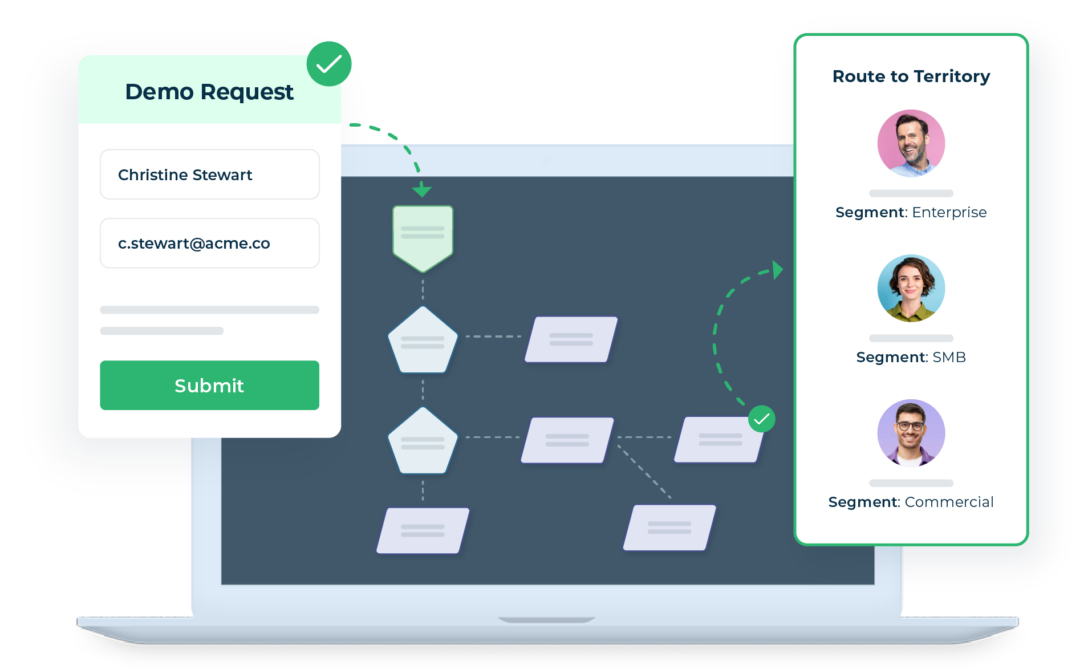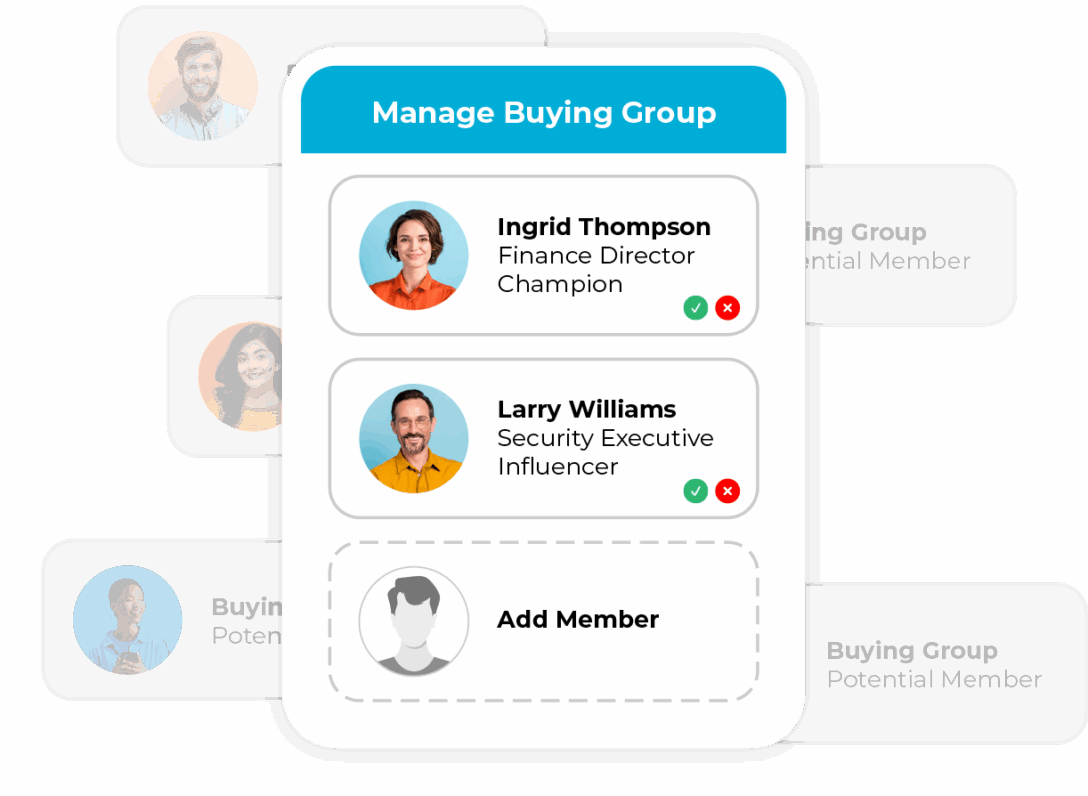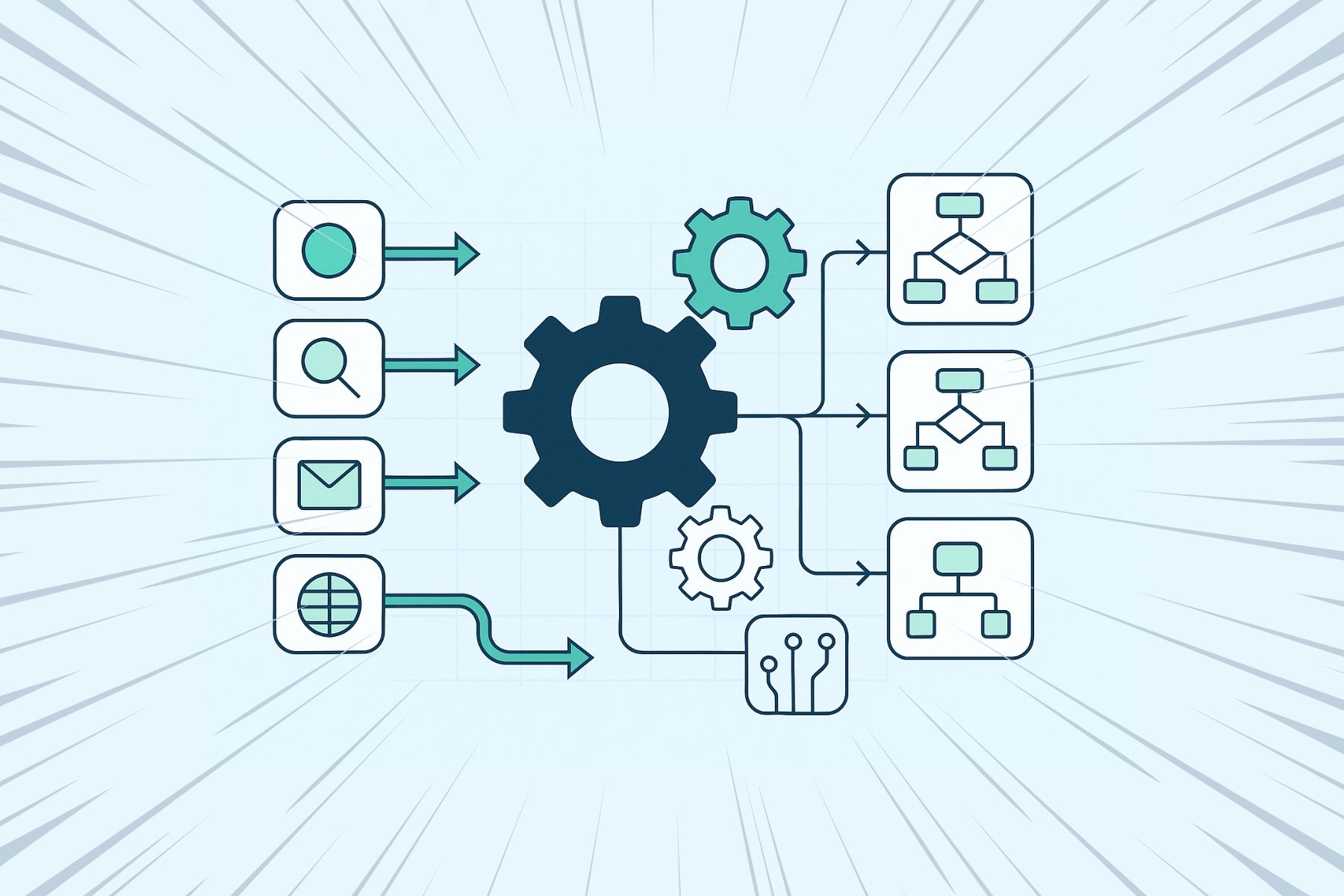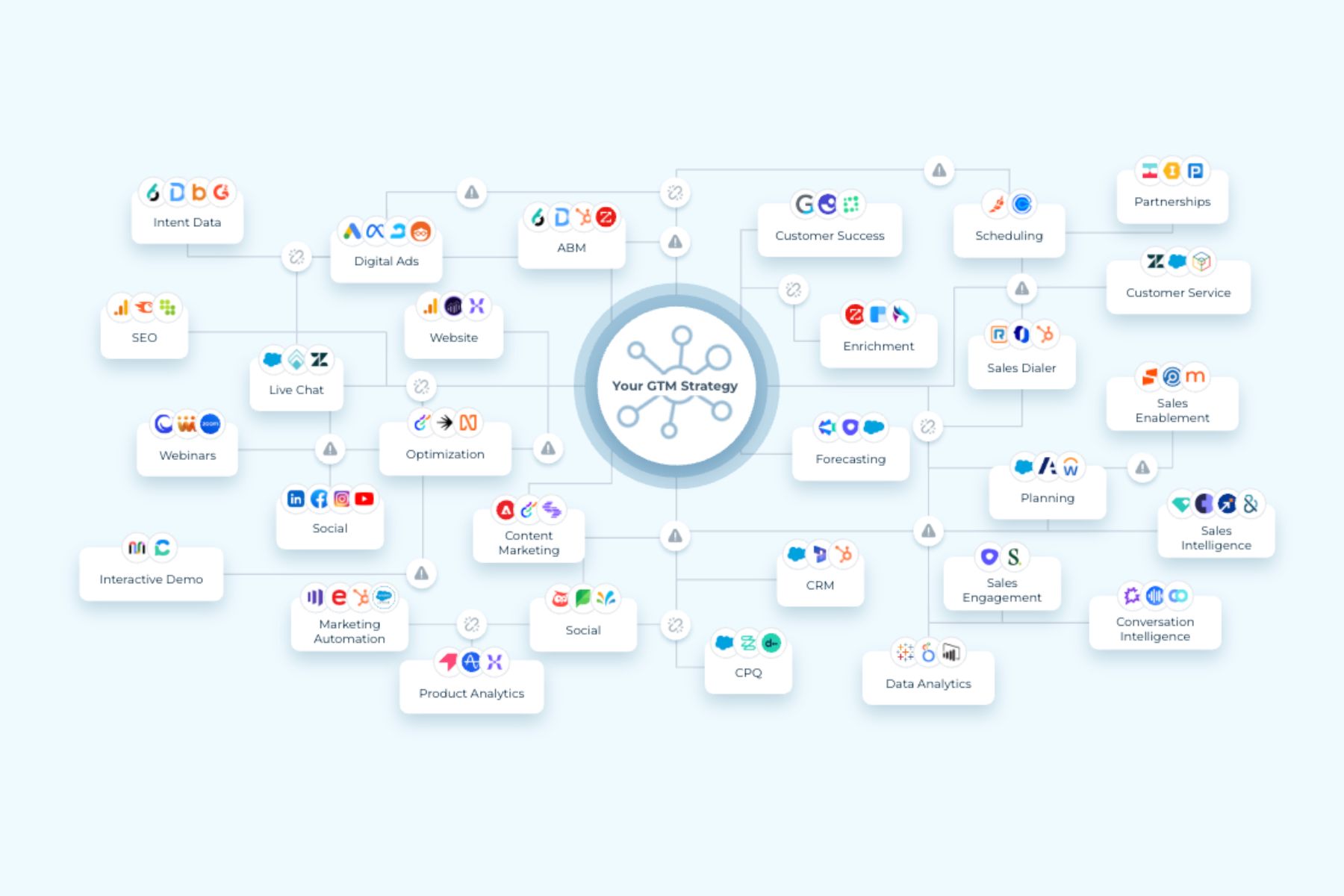In a growing enterprise, revenue teams often feel like they are trying to conduct a symphony where half the musicians are playing from different sheet music.
Territories change overnight.
Team members are suddenly unavailable.
New product lines launch mid-quarter.
Business units risk colliding in the same buyer accounts.
The result can be missed opportunities, frustrated teams, and buyers who wonder if anyone is really listening.
Enterprise GTM execution is about preventing that chaos.
It is the ability to align every part of the go-to-market motion so buyer signals trigger the right actions, at the right time, across every territory, channel, and team.
Modern orchestration technology now makes this possible at a scale and speed that was not realistic before.
This article looks at the principles of orchestrating enterprise GTM execution through the lens of real-world challenges and solutions.
While LeanData’s latest features serve as examples, the focus here is on the strategic outcomes that every large GTM organization should aim for.

The Orchestration Challenge in Enterprise GTM Execution
Growth brings more moving parts.
Every new territory, product, team member, or GTM motion adds layers of rules, assignments, and workflows. What works for a 50-person revenue organization starts to strain under the weight of a 500-person team.
The pressure points often look like this:
- Territories that cannot be updated quickly enough, leaving leads unassigned or routed to the wrong place.
- Buyer inquiries that stall when the assigned rep is unavailable.
- Sales engagement that looks different in every region or business unit, making it difficult to measure or improve.
- Business units unintentionally competing for the same accounts or prospects.
Each breakdown slows the GTM engine. Response times lengthen, buyer experiences suffer, and revenue opportunities slip away. The solution lies in designing orchestration that can scale without creating bottlenecks.

Delegating Without Losing Control
One of the first bottlenecks to appear in a growing GTM operation is territory management.
When only a central admin team can make updates, even small changes take too long. Local managers often have better insight into their market segments but lack the access to act on it.
The orchestration principle here is simple: delegate ownership to the people closest to the market while maintaining governance. By giving territory segment managers scoped access to make updates, you can adjust coverage faster without risking platform security.
The outcome is measurable. Territories stay accurate, coverage gaps close quickly, and leadership keeps visibility into who owns what.
Delegation, when done with the right guardrails, removes one of the most persistent delays in enterprise GTM execution.
Automating Around Human Realities
Even the best territory plan cannot account for every absence. Reps take vacations, get sick, or step away unexpectedly. Without a system to handle these changes automatically, assignments can pile up in the wrong inbox and SLAs start to slip.
An orchestration strategy must account for human realities:
- Connect availability data directly to routing so assignments shift automatically when someone is out.
- Sync with a company calendar system so the orchestration platform always knows who is available without manual updates.
- Reassign records instantly to protect SLAs and keep opportunities moving.
As a result:
- Buyers never feel the impact of staffing changes.
- Follow-up stays timely.
- Opportunities keep progressing toward close.
This is a simple concept but a powerful safeguard for large GTM teams.
Simplifying Complex Sales Engagement
As organizations expand campaigns, product lines, and regions, the logic for assigning prospects to the right follow-up can become tangled.
In many enterprises, the routing graphs or workflows that determine who gets which prospect are sprawling, difficult to maintain, and slow to adapt when the market shifts.
The orchestration principle here is to keep routing logic adaptable.
Instead of building separate paths for every possible sequence or cadence, store those instructions in a central, easily updated location and let the orchestration system pull from them dynamically.
This approach means that when a new campaign launches or a sequence changes, teams can update it once and see the change reflected everywhere.
It reduces operational overhead, accelerates campaign rollouts, and ensures every buyer gets the right engagement without delay.

Managing Multiple Business Units in Harmony
Large enterprises often run multiple GTM motions at the same time: different products, buyer segments, or regions, and many share the same CRM. Without clear separation, one business unit’s rules can interfere with another’s.
That creates confusion, slows down execution, and risks a poor buyer experience.
The orchestration solution is to segment workflows by business unit while still managing them under one coordinated framework. This way, each unit can operate independently without risk of overlap, but leadership can still see performance and trends across the organization.
When done well, this keeps the focus on the buyer experience. No matter which product line or region is involved, the process is smooth, coordinated, and aligned with the overall revenue strategy.
GTM Orchestration Principles for Scalable Growth
From these scenarios, four orchestration principles emerge that apply to any enterprise GTM execution strategy:
- Delegate with governance: Empower local managers to make changes quickly while keeping leadership oversight.
- Automate coverage adjustments: Build processes that reassign work instantly when availability changes.
- Keep routing logic adaptable: Centralize instructions so they can be updated once and applied everywhere.
- Segment intentionally: Structure workflows so business units operate independently without colliding.
These principles give large GTM teams the speed of a smaller organization without losing the control and structure needed at scale.
Scaling Without Slowing Down
The reality of enterprise GTM execution is that complexity will always increase as you grow. The difference between teams that thrive and those that struggle is how they design their orchestration.
When you delegate updates to the right people, automate around human realities, keep logic adaptable, and segment with intent, you create a system that can absorb change without breaking stride.
That is the foundation of scalable growth.
Modern orchestration tools make this achievable. They turn what used to be bottlenecks into smooth, automated processes that protect the buyer experience and keep revenue teams in sync.
The enterprises that invest in building this level of orchestration today will be the ones that adapt fastest to new markets, new motions, and the next wave of buyer expectations.












